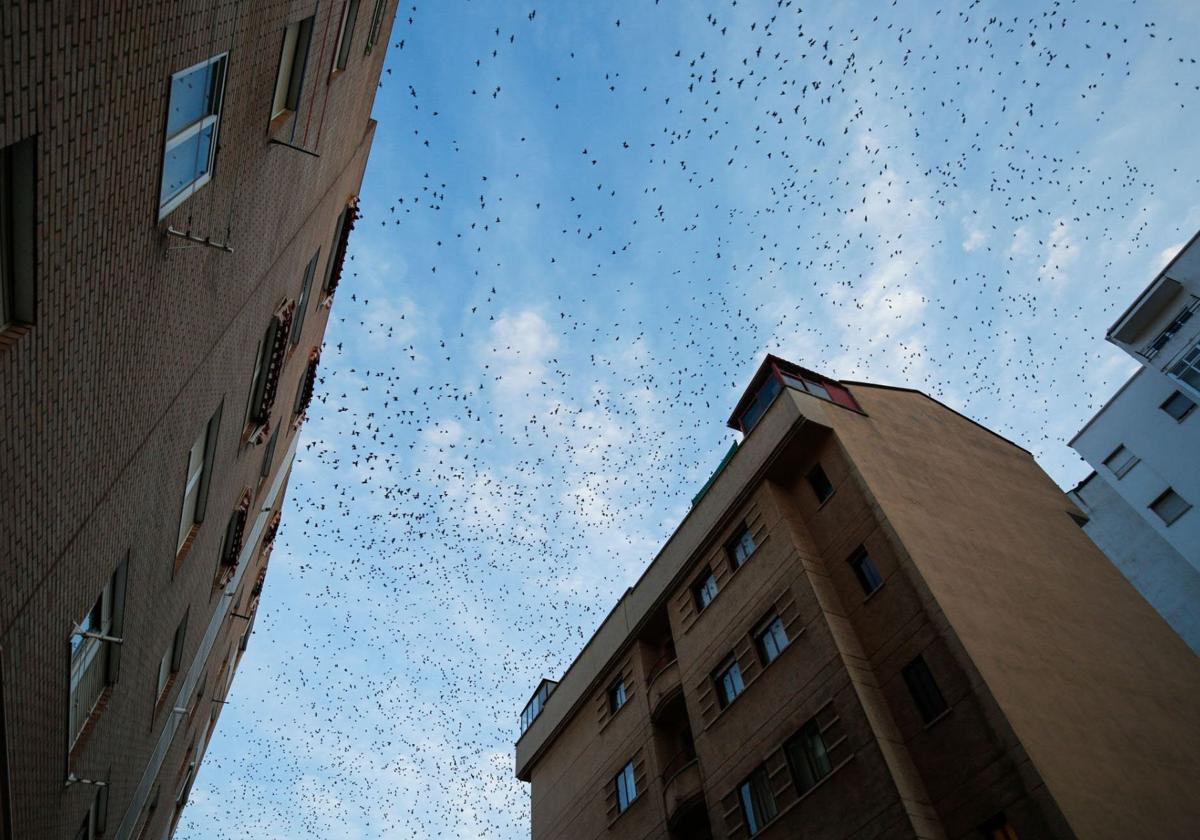The historic Spanish city where starlings are ruling the roost
A Vox councillor in Salamanca is proposing drastic measures to reduce the number of birds after years of unsuccessful attempts that have failed to scare them away
Félix Oliva
Salamanca
Monday, 7 April 2025, 17:07
It's a case of the starlings versus the people in the historic Spanish city of Salamanca. According to Vox councillor Ignacio Rivas, it's time to "choose between starlings and the residents".
Over the years simulated gunshots and recorded squawks have failed to reduce the number of these invasive birds that nest in the city and apparently cause major problems due to their high numbers. There are, according to some municipal estimates, more than 100,000, and a permanent colony that pollutes and disturbs the city's main parks.
Rivas' right-wing political party is now proposing to implement drastic measures to reduce the population, including catching and killing them, mirroring what Madrid did with its parrot problem.
The councillor will bring a motion to the city hall's next full council meeting where he will be seeking support from all political parties to move from control measures to those aimed at reducing the population of these birds. Rivas considers it "a public health problem" that generates significant noise and foul smells, especially in parks and avenues taken over by the birds.
Rivas insists that the proposal would be done without using cruel methods, with the corresponding permits, to reduce a population which he says has reached 100,000 and which is one of the most invasive birds in the world, which is why he is calling for a reduction of up to 90 per cent.
Ineffective controls
So far attempts have included measures aimed at scaring away the birds, at a cost of around 4,300 euros per month for the whole year and around six people employed to do so. However, it is not proving effective and the birds are not scared. Town hall workers have identified no less than 30 roosts in fifteen areas of the city.
Plaza del Mercado Viejo; Plaza del Barrio Vidal; Plaza de Colón; Plaza de Carmelitas; Plaza de Barcelona; Paseo de San Vicente; Paseo de Carmelitas; Parque de Picasso; Parque de La Alamedilla; corner of Calle Valencia; corner of Avenida Portugal and Avenida de Italia; around Dominicos; the university campus; Calle Velázquez; Avenida de Torres de Villarroel; Avenida de Portugal; Avenida Reyes de España; La Salle; Plaza Julián Sánchez el Charro; Cuesta de San Blas and Plaza del Mercado del Comercio are some of the places where work is being carried out.
Laser pointers, recorded squawks from the birds themselves and firecracker shots have been used.
Changes in the climate and in their habits have reduced their migrations and they are spending more and more time in the city and concentrating in greater numbers, as they enjoy good temperatures here all year round. They also eat the crops of the surrounding villages.
They cover the roofs and antennae of houses, occupy the trees in the city's large green areas and their droppings litter streets, pavements, benches and street furniture, causing strong odours. But the worst thing is their squawking.
To scare them away, patrols use the recorded squawks of magpies and crows and the warning sounds of the starlings themselves. However, it would seem that the starlings are not afraid. Rockets and laser pointers are also being used to try to flush out the flocks but nothing seems to be working.
